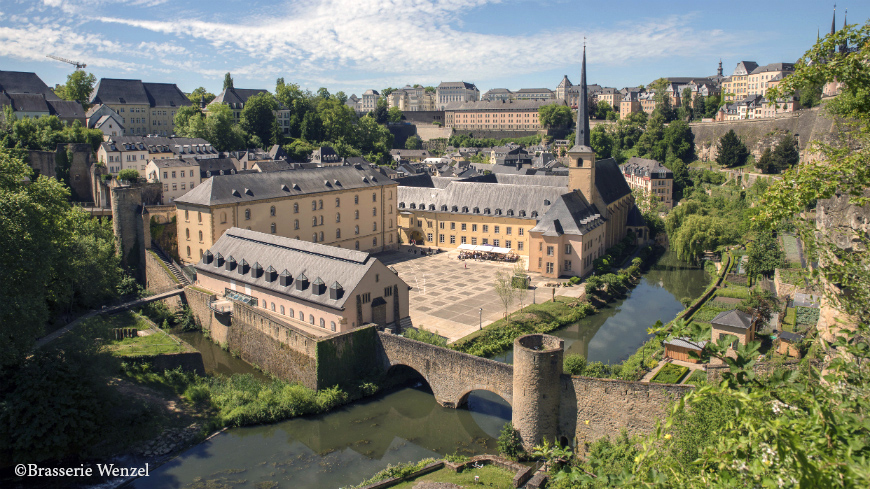Parques de Sintra – Monte da Lua S.A. / Parques de Sintra – Monte da Lua S.A.
- Cultural Route
-
- European Route of Historic Gardens
- Country
-
- Portugal
- Member Category
-
- Tourism Stakeholder
- Heritage Site
- Member Status
- Individual
- Year of Accession to Membership
- N/D
- Contact Details
- Rua Visconde de Monserrate
PT-2710-405 Sintra
Tel: +351 21 923 73 00
Website: www.parquesdesintra.pt
Email: info[at]parquesdesintra.pt
Parque da Pena (Park of Pena)
Estrada da Pena
PT-2710-609 Sintra
Tel: +351 21 923 73 00
Website: www.parquesdesintra.pt/en/parks-monuments/park-and-national-palace-of-pena
Email: info[at]parquesdesintra.pt
Parque de Monserrate (Park of Monserrate)
Rua Visconde de Monserrate
PT-2710-405 Sintra
Tel: +351 21 923 73 00
Website: www.parquesdesintra.pt/en/parks-monuments/park-and-palace-of-monserrate
Email: info[at]parquesdesintra.pt
Jardins do Palácio Nacional de Queluz (Gardens of the National Palace of Queluz)
Largo Palácio de Queluz
PT-2745-191 Queluz
Tel: +351 21 923 73 00
Website: www.parquesdesintra.pt/en/parks-monuments/the-gardens-and-national-palace-of-queluz
Email: info[at]parquesdesintra.pt
- Contact Person
- N/D
- Main Town/Region
- Sintra (Lisbon)
- Site Town/Region
- Sintra (Lisbon) / Queluz (Lisbon)
- Main GPS Location
- 38.791982, -9.419128
- Site GPS Location
- 38.787185, -9.383755 / 38.791982, -9.419128 / 38.750785, -9.259046
- UNESCO World Heritage List
- Cultural Landscape of Sintra (1995) (whc.unesco.org/en/list/723)
- European Heritage Label
- N/D
- Other Heritage Labels
- N/D
- Description
- Parques de Sintra – Monte da Lua S.A. (PSML) is an exclusively publicly funded company, established in 2000 following the classification of Sintra’s Cultural Landscape as a World Heritage Site in 1995. Its aim was to bring together the institutions responsible for safeguarding and enhancing this landscape, and the Portuguese State entrusted the management of its main estates in the area to the company.
The Sintra Cultural Landscape is an extraordinary and unique complex of parks, gardens, palaces, country houses, monasteries and castles, which create an architecture that harmonizes with the exotic and overgrown vegetation, creating micro-landscapes of exotic and luxuriant beauty.
The Park of Pena is composed of several gardens and landscaped areas, where native and exotic plant species originating from the four corners of the world appear side by side. It features an extensive system of water features that includes waterfalls, ponds, lakes and fountains, as well as small decorative buildings scattered around the park, whose location is based on the careful and systematic selection of remarkable viewing points.
The gardens of Monserrate were built in 1790 by Gerard De Visme, an English merchant who had made his fortune in trade with Brazil. The botanical gardens were founded in the 1850’s by Sir Francis Cook, and developed over four generations (1856-1947). Plant collections include a number of magnificent tree specimens, some of which are probably among the largest of their kind in cultivation. The historical gardens of the Palace of Monserrate are considered one of the most important English landscape gardens beyond the British Isles and one of the most beautiful landscaped creations of the Romantic period in Portugal.
Initially conceived as a summer residence, Queluz became the royal family’s preferred place for their leisure and entertainment. They lived there permanently from 1794 until their departure for Brazil in 1807, at the time of the French invasions. Used by the royal family as a privileged setting for its festivities and celebrations, the Gardens of the National Palace of Queluz represent a valuable national heritage and are highly distinctive in landscape terms, being considered one of Portugal’s most important historical gardens (www.europeanhistoricgardens.eu/en/portfolio-item/gardens-of-the-national-palace-of-queluz).
- Logos/Pictures








